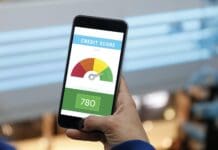New data revealed in a report conducted by the New York Federal Reserve states that consumers in the United States grew their debt by $1 trillion in 2021, the fastest recorded rate in 14 years since 2007. Throughout 2021, consumers bought larger items, such as new homes and cars, which likely added to their household debt. Plus, because of supply shortages and inflation, goods have become much more expensive — which just adds even more debt.
According to this new report, newly opened mortgage and auto loans increased quite a bit, when it comes to the complete balance of these loans, in 2021. More than $4.5 trillion was recorded in mortgages for 2021, which is a new high ever recorded. Overall, mortgage balances also increased by about $258 billion in the fourth quarter alone. This resulted in about $10.93 trillion by the end of the year.
Much of this new data does seem to suggest that consumers in the United States are slowly returning to how they spent money before the pandemic. Looking at credit card data specifically shows this. While it is normal for credit card use to rise in the fourth quarter as many consumers buy gifts and presents during the holiday, credit card balances did increase the most in recorded history in 2021’s fourth quarter, increasing by $52 billion. However, even with this record increase, credit card balances are still $71 billion lower than what they used to be at the end of 2019.
This is likely because, during the pandemic as loans such as student loans were put on hold, many consumers were able to take the time to pay off their other debts. Because of the many forbearance programs, as well as even some of the government stimulus checks given earlier in the pandemic, many consumers were likely able to save money more easily than before the pandemic. This could have also helped people pay off more debt.
However, even with people paying off debt, there are still many consumers who are creating more debt by buying homes or investing in new cars. The price of homes and cars has risen in the past year, which is reflected in this increase in household debt for the year. Now, it does appear that auto loan originations may have finally returned to pre-pandemic levels. However, loan amounts have also increased, as a result of a car’s price increase.
In the next few months, economists are carefully watching the household debt rates, as well as how consumers continue to save. As forbearance programs go away, especially ones related to student loans, analysts are interested to see how consumers are able to juggle this debt payment. Many analysts have stated that it will be difficult for many to begin to easily reach these payments, especially if they bought a car or house during the pandemic when their student loan was in forbearance.
Therefore, the coming year will be pivotal in this way. As household debt will likely continue to increase as the price of homes and cars does, debt may also be harder for consumers to stay on top of.













